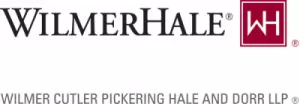- within Environment topic(s)
Precedential and Key Federal Circuit Opinions
1. ALNYLAM PHARMACEUTICALS, INC. v. MODERNA, INC. [OPINION] (2023-2357, 06/04/2025) (Taranto, Chen, Hughes)
Taranto, J. The Court affirmed the district court's claim construction ruling, which formed the basis for the parties' stipulated judgment of non-infringement. The Court held that the patentee acted as a lexicographer regarding the claim term "branched alkyl" in a passage in the specification. The relevant sentence appeared under the title "Definitions." The term to be defined was also set off in quotation marks. Additionally, the sentence used the phrase "refer to," which generally conveys an intent for that sentence to be definitional. Elsewhere in the Definitions section, the patentee used non-limiting terms that contrasted with the "refer to" language. Lastly, the sentence included the phrase "unless otherwise specified," suggesting that the rest of the sentence laid out a generally applicable rule or definition. The Court stated that a clear reason would be required to depart from that controlling definition. The Court found no such reason in the claims, the specification, or the prosecution history.
2. DOLBY LABORATORIES LICENSING CORPORATION v. UNIFIED PATENTS, LLC [OPINION] (2023-2110, 06/05/2024) (Moore, Clevenger, Chen)
Moore, J. The Court dismissed for lack of injury in fact sufficient to confer standing to appeal the decision of the Patent Trial and Appeal Board. The Board declined to adjudicate patent owner's contention that additional entities also should have been named as real parties in interest ("RPIs"). The Court held that the patent owner failed to show it suffered an invasion of a legally protected interest that is concrete and particularized and actual or imminent, not conjectural or hypothetical. A party's statutory right to appeal under the America Invents Act ("AIA") does not dispense with the Article III injury-in-fact requirement to confer standing. The Court also held that the AIA does not create an informational right to know the identities of all RPIs in an inter partes review proceeding. The Court also rejected the patent owner's other purported injuries that were too speculative to establish injury in fact.
3. FRAUNHOFER-GESELLSCHAFT v. SIRIUS XM RADIO INC. [OPINION] (2023-2267, 06/09/2025) (Lourie, Dyk, Reyna)
Lourie, J. The Court reversed the district court's grant of summary judgment of equitable estoppel. The Court agreed with the district court that the plaintiff's more-than-five-year silence in asserting infringement rose to the level of misleading conduct, in light of plaintiff's clear knowledge of that infringement and where plaintiff itself built the allegedly infringing features. The Court also agreed with the district court that, if defendant could establish that it relied on plaintiff's misleading conduct in reaching its decision to migrate to the accused system, then there was no genuine dispute of material fact that defendant was prejudiced by that reliance. That decision, made in the face of a viable non-infringing alternative, was sufficient to establish prejudicial reliance. However, the Court found that the evidence introduced by defendant failed to indisputably establish that it considered plaintiff's silence or inaction and that such consideration influenced its decision to migrate to the accused system.
4. AGILENT TECHNOLOGIES, INC. v. SYNTHEGO CORP. [OPINION] (2023-2186, 06/11/2025) (Prost, Linn, Reyna)
Prost, J. The Court affirmed the final written decisions of the Patent Trial and Appeal Board. Substantial evidence supported the Board's finding that the relevant prior art expressly disclosed the claimed functionality. And there was no error in the Board's conclusion that the prior art was enabling. The Court explained that the inquiry of whether a prior art reference was enabling, and could thus support anticipation, was separate from whether asserted claims were sufficiently enabling to be valid under 35 U.S.C. § 112. In the § 112 context, enablement ensures the patentee does not obtain a broader monopoly than the specification teaches, but that is not a concern in the enabling anticipatory prior art context. An enabling anticipatory prior art reference need only enable a single embodiment of the claim. The Court distinguished its prior decision in Impax, where the relevant prior art disclosed hundreds or thousands of compounds and several diseases, as well as broad and general dosage guidelines without sufficient direction or guidance to prescribe a treatment regimen. In this case, the Board found that the particular types of chemical modifications disclosed in the prior art and recited in the challenged claims had been known and used for decades to stabilize RNA against unwanted degradation in other systems. And while the patent in Amgen required painstaking experimentation to see what works, the Board in this case found that a person of ordinary skill in the art understood how the different elements of a CRISPR/Cas system were used and function together, including the role of gRNA; the types of chemical modifications that had been successfully used in other systems to reduce RNA degradation, while preserving functionality; and standard techniques for making gRNAs with the modifications disclosed and exemplified in the prior art. The Court also found that substantial evidence supported the Board's obviousness determination, explaining that obviousness does not necessarily require all the claimed limitations to be expressly disclosed in the primary prior art references but can take account of the inferences and creative steps that a person of ordinary skill in the art would employ. Furthermore, the Board's cross-reference to its earlier discussion addressing "global arguments" concerning motivation to combine and reasonable expectation of success supported its obviousness determination.
The content of this article is intended to provide a general guide to the subject matter. Specialist advice should be sought about your specific circumstances.







